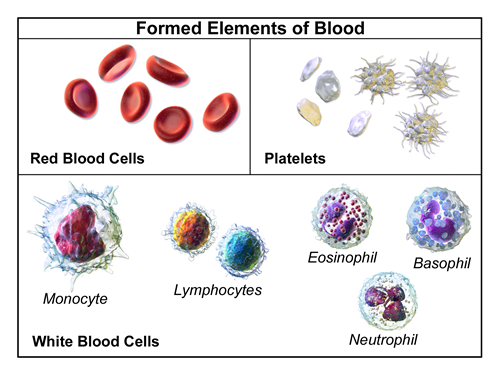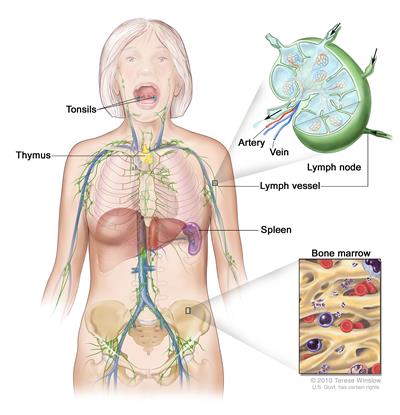PDF chapter test TRY NOW
Nutrients, water, oxygen, hormones etc., are required for the survival of an organism. Therefore, these substances must be transported to all parts of the body to function properly. Similarly, it must eliminate wastes from the body. Thus, all living organisms need a circulatory and excretory system, which together constitute the transportation system.
Transportation is through body fluids which can be either intracellular or extracellular. Extracellular fluid includes blood, lymph, cerebrospinal fluid (CSF) etc.
Blood
Blood is a connective tissue that is the most common body fluid in complex multicellular organisms. The blood consists of a watery fluid called plasma in which the blood cells are suspended. It has a slightly alkaline pH of 7.4.
Plasma - The liquid portion of the blood:
Plasma is a pale yellow, transparent fluid that comprises 90 - 92 \% water. The other constituents include minerals, glucose, protein, clotting factors, amino acids etc. The plasma makes up to 55 \% of the total volume of the blood. It transports food, CO_2 and the nitrogenous wastes in the dissolved state.
Blood cells - The solid portion of the blood
Blood cells constitute about 40 - 45 \% of the blood. They are of three types:
1. Red blood corpuscles (RBCs) or erythrocytes - RBC's contains haemoglobin which carries oxygen in the blood. It is non-nucleated.
2. White blood corpuscles (WBCs) or leucocytes - WBC's are colourless and nucleated cells that aids in the defence mechanism of the body. WBCs can be agranulocytes and granulocytes. Lymphocytes and monocytes are agranulocytes. Neutrophils, eosinophils and basophils are granulocytes.
3. Blood platelets or thrombocytes - These are non-nucleated and disc-shaped cells. Blood platelets are involved in the process of blood coagulation.

The components of blood
Functions of blood
1. Blood aids in the transportation of respiratory gases (oxygen and carbon dioxide), hormones and wastes of the body from the various body parts to the kidney.
2. It also maintains the pH, water levels, ionic balance and body temperature.
Lymph
Lymph is also a connective tissue which is also called tissue fluid. Through the pores present in the capillary walls, some plasma, proteins and lymphocytes escape into the intracellular spaces in tissues to form the lymph or tissue fluid.
Lymph is colourless and constitutes lymph plasma and lymph corpuscles. The lymph plasma is similar to the blood plasma, but it has fewer blood proteins and high glucose concentration. The lymph corpuscles include the leucocytes, which are mostly lymphocytes. RBCs and platelets are absent in lymph.
The organs that secrete lymph are known as lymphoid organs. Lymph nodes, tonsils, spleen, thymus gland includes the lymphoid organ.

Lymphatic organs
Lymph drains into the lymphatic capillaries from the intercellular spaces, which joins to form large lymph vessels which finally opens into the larger veins. The spleen is the largest lymphoid organ present in the body.
Functions of lymph
1. The WBCs present in the lymph aids in the defence mechanism, repair and healing of tissues.
2. It carries nutrients, hormones etc.
3. It helps in the absorption of fats in the lacteals present in intestinal villi. It also carries digested and absorbed fat from the intestine and drains the excess fluid from the extracellular space back into the blood.
Reference:
https://commons.wikimedia.org/wiki/File:Blausen_0425_Formed_Elements.png
https://www.flickr.com/photos/nihgov/28876155584
